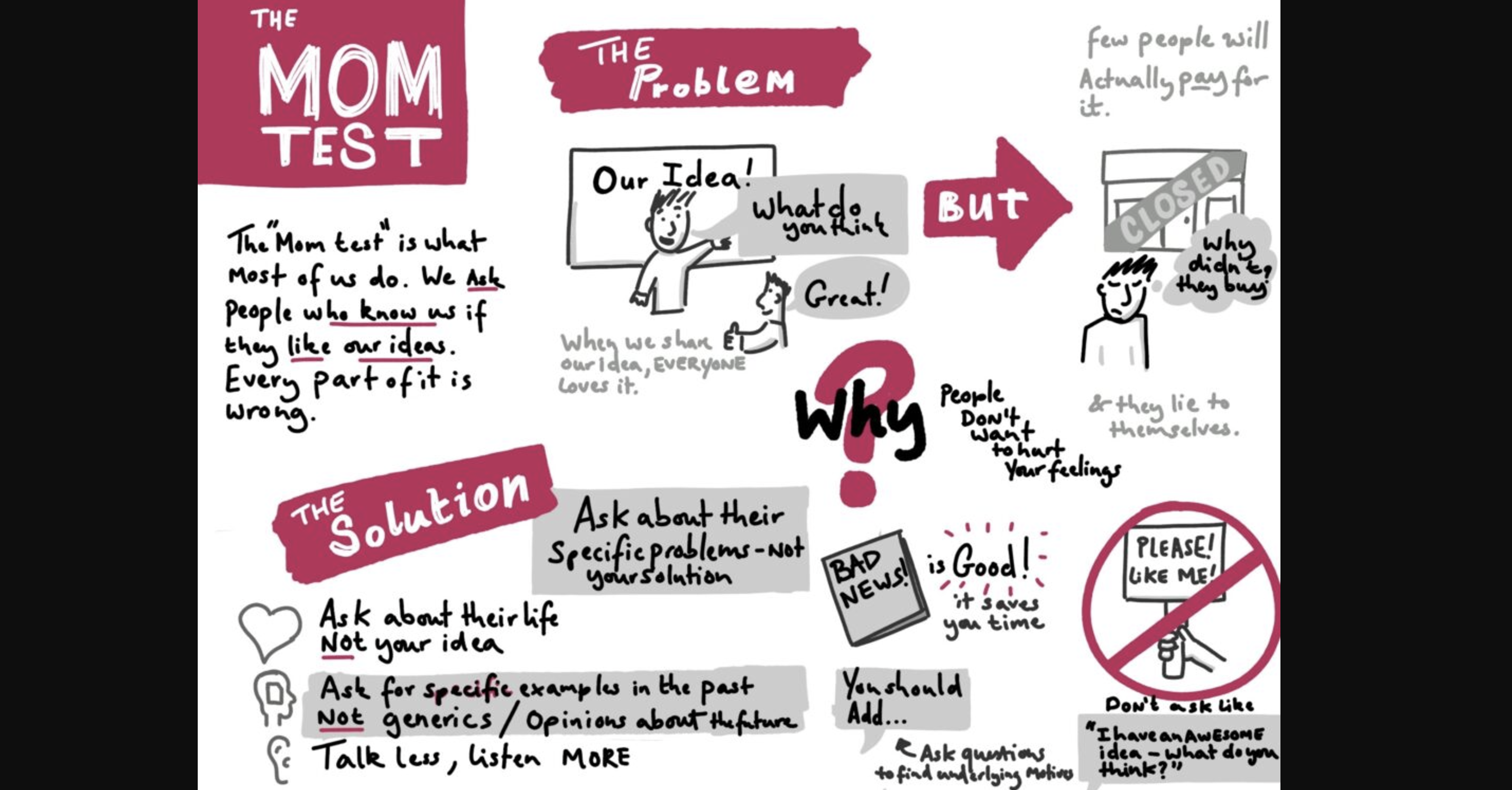Why Your Mom Thinks Your Idea Is the Best?
 Adyasha Mohanty
Adyasha Mohanty
If you are an engineer, you have probably had that idea — you know, the one you daydream about turning into a billion-dollar product someday. You get excited, maybe even pitch it to a few friends and ask questions like:
“Do you think it’s a good idea?”
“Would you use something like this?”
“How much would you pay for X?”
But here is the thing — people want to be nice. Even if your idea isn’t great, they will try to be encouraging. I have been there and it’s super easy to confuse polite nods with genuine market validation.
The Time I Messed This Up
Once, my team and I were working on what we thought was a game changing feature. To kind of validate our idea, we reached out to an influencer for feedback. But instead of letting them share their thoughts, I blurted out:
“Do you think this idea fits the market?”
Their response?
"Yeah, I think there’s scope to it.”
I was thrilled! But looking back, they were probably just being polite (or worse, saying what I wanted to hear). That’s when I stumbled upon the book The Mom Test by Rob Fitzpatrick.
This book was a game-changer for me. It taught me how to approach conversations in a way that uncovers truth, not compliments. And yes, I realised how much I’d been doing it wrong.
What is The Mom Test?
Imagine asking your mom if your business idea is good. What’s she going to say?
“Of course, sweetie! You’re a genius!”
She loves you, so she’ll lie. The same goes for friends, colleagues and anyone who doesn’t want to hurt your feelings. The Mom Test teaches us to ask questions that make it impossible for someone to lie.
What I Learned from The Mom Test
Here’s what I learned (and wish I knew earlier):
1. Avoid Asking Leading Questions
Bad question:
“Do you think this idea will sell?”
People will nod just to be nice.
Good question:
“How do you currently solve this problem?”
This digs into their existing behavior, not their imagination.
2. Focus on Actions, Not Opinions
Bad question:
“Would you pay for this feature?”
They might say yes to avoid awkwardness.
Good question:
“When was the last time you paid for a similar product? What made you pay for it?”
Now you’re uncovering behavior.
3. Ask About Specific Experiences
Bad question:
“Do you think this app idea is cool?”
Coolness doesn’t guarantee adoption.
Good question:
“Can you walk me through the last time you tried solving X?”
This gives you insight into real challenges and workarounds.
In short:
👉 Don’t ask for opinions. Instead, ask about experiences and actions.
How to Ask the Right Questions
Here’s a cheat sheet for productive conversations:
To understand a feature request:
Why do you want that?
How are you coping without it?
What would it let you do that you can’t do now?
To explore emotional pain points:
Why haven’t you fixed this yet?
What’s the most frustrating part of your current solution?
To validate a solution idea:
- When was the last time you tried solving this X?
How to Have Better Conversations
Start Broad, Then Zoom In
Begin with open ended questions to get the full context.
ex:“Can you walk me through your day-to-day process for X?”Focus on Past Actions, Not Hypotheticals
Instead of asking what they would do, ask what they have done.Pay Attention to Emotions
Ask how they felt about specific experiences. Frustrations often highlight opportunities.Ask for a Commitment
If someone truly believes in your idea, they will show it — by introducing you to someone, signing up for a trial or pre-paying.
What Not to Do
Don’t Pitch: When you pitch, you’re looking for approval, not insights.
Don’t Chase Compliments: A “this sounds cool” won’t help you build a product.
Don’t Convince: If your idea is good, it’ll stand on its own.
Wrapping Up
Building something meaningful starts with understanding real problems — not chasing compliments. The Mom Test taught me to approach validation like debugging code: ask the right questions, look for patterns and test assumptions.
Validation isn’t about hearing “yes”. It’s about uncovering the truth — even if it’s not what you hoped for.
Your ideas deserve it. 🙌
Subscribe to my newsletter
Read articles from Adyasha Mohanty directly inside your inbox. Subscribe to the newsletter, and don't miss out.
Written by

Adyasha Mohanty
Adyasha Mohanty
Hi, I am Adyasha Mohanty, a self taught developer extraordinaire from India. I am passionate about bringing ideas to life from the ground up whether that’s crafting beautiful or building intuitive user interfaces. Beyond coding, I thrive on sharing knowledge, engaging with the tech community and helping others grow. I love the entire journey of creation from the first line of code to shipping polished, user ready products. Let’s build, learn and ship amazing things together. 🚀